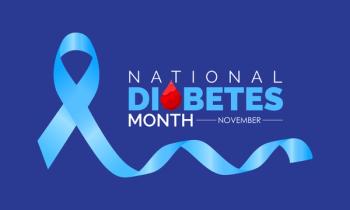
Asembia AXS25: Community Pharmacists Can Optimize Specialty Pharmacy Care
Key Takeaways
- Pharmacists' integration into specialty care at the community level can transform health care delivery, improving clinical outcomes and offering personalized care.
- Walmart's specialty pharmacy pilot program exemplifies successful integration, providing services for HIV and autoimmune diseases and serving as a model for other health systems.
Integrating community pharmacists into specialty pharmacy care can enhance patient access, address physician shortages, and expand pharmacists' roles in delivering high-quality clinical services, according to experts at Asembia’s AXS25 Summit.
Pharmacists are increasingly being positioned to deliver specialty care at the community level, a shift that could transform the landscape of health care, according to a panel discussion during a business session titled “Specialty Pharmacy Access in the Community” at Asembia’s AXS25 Summit, which was held from April 27 to May 1, 2025, in Las Vegas, Nevada.1
“Pharmacists’ education and their experience enable them to take on this responsibility,” Kassem Elhelou, director of market health and wellness at Walmart, said during the discussion. “Pharmacists have a proven track record of elevating their scope when it matters most.”1
An expert panel of specialty pharmacists led the discussion, including Elhelou; Rod Thornton, director of health policy and strategy, Johnson & Johnson; Lisa Thornton, senior director, health and wellness operations, for Region 42, Walmart; and moderator Kevin Barton, senior director of Walmart health and wellness merchandising strategy.1
Importance of Community Pharmacy
Community pharmacists have a unique expertise that can allow them to help optimize care across disciplines. By working with physicians, community pharmacists assist patients on a host of outcomes and have been shown to ultimately aid in improving hemoglobin A1c, systolic blood pressure, vaccination rates, and other important clinical markers. By integrating community pharmacists into specialty care, patients can experience care that is truly targeted and personalized. The panelists discussed how Walmart is evaluating such integration through its specialty pharmacy pilot program, which has provided community services for HIV and autoimmune diseases and looks to expand in the future.1-3
Adding specialty services into community settings is simply adding another hat to the many that community pharmacists wear, according to Lisa Thornton. Overall, their role continues to evolve, and “there is an incredibly broad appeal to what pharmacists can do as we offer increased access to additional services for patients,” she explained. Noting that 90% of individuals in the US have a Walmart within 10 miles of their home, Lisa Thornton discussed how community pharmacy teams can be empowered to extend their services and further educate themselves to help overcome patient barriers.1
“There’s a lot of benefit to thinking about how a patient can access specialty care that feels part of their normal journey,” Lisa Thornton said.1
Promoting Pharmacy
The fact that community pharmacists can provide enormous benefit to specialty disease treatment is undeniable. But promoting the incredible feats of pharmacists can sometimes be difficult and requires unique campaigns to ensure their achievements are recognized. Elhelou and Rod Thornton highlighted initiatives from their respective organizations. At Walmart, Elhelou said, stakeholders advocate at the state and federal levels for the pharmacy profession while pharmacists fulfill their responsibilities at home. Rod Thornton showcased Johnson & Johnson’s partnership with the American Pharmacists’ Association (APhA) to better connect pharmacists with their communities.1
In particular, Rod Thornton highlighted the #Indispensable campaign on social media organized in conjunction with APhA to showcase how indispensable pharmacists are to their communities. According to Rod Thornton, the campaign has highlighted millions of impressions on various platforms, and he believes that more initiatives such as these can help shed light on the important work of pharmacists in practices across the country.
“Pharmacists are truly indispensable in terms of the work they do,” Rod Thornton explained, providing a pertinent example in noting that pharmacists helped provide two-thirds of COVID-19 vaccinations early in the pandemic.1
Trust Through Relationships
Above all, building trust in the community is paramount to any effective pharmacy practice, according to Lisa Thornton. Successful programs such as test and treat, which has been implemented in countless community pharmacies and allows patients to receive fast diagnoses and medications, indicate that patients are receptive to their local pharmacists taking on new roles. Ultimately, as pharmacists take on new roles in the specialty space, more trust and rapport can be built with the patient.1
“It’s about building trust with many stakeholders that pharmacists in the community setting can execute these types of services with quality,” Lisa Thornton said.1
Integrating community pharmacists into specialty practices won’t be an easy task, but Walmart’s specialty pharmacy pilot program can serve as a blueprint for other health systems looking to expand care options for patients. Rod Thornton explained how integral specialty pharmacy is at every level of a patient’s journey and advocated for wraparound treatment that provides holistic patient care, especially for patients in regions that may have less access than others.1
Barton added, “It’s going to take a full army to get all of this right,” noting the work that remains in prior authorization and formulary reform. “It’s going to take everyone at this conference to continue to drive the value of the pharmacist,” he said.1
REFERENCES
1. Barton K, Thornton R, Thornton L, Elhelou K. Specialty pharmacy access in the community. Presented at: Asembia AXS25 Summit; April 27-May 1, 2025; Las Vegas, NV.
2. Newman TV, Hernandez I, Keyser D, et al. Optimizing the role of community pharmacists in managing the health of populations: barriers, facilitators, and policy recommendations. J Manag Care Spec Pharm. 2019;25(9):995-1000. doi:10.18553/jmcp.2019.25.9.995
3. Walmart launches autoimmune-focused specialty pharmacies of the community. Pharmacy Times. August 20, 2024. Accessed April 28, 2025. https://www.pharmacytimes.com/view/walmart-launches-autoimmune-focused-specialty-pharmacies-of-the-community
Newsletter
Stay informed on drug updates, treatment guidelines, and pharmacy practice trends—subscribe to Pharmacy Times for weekly clinical insights.


















































































































































































































